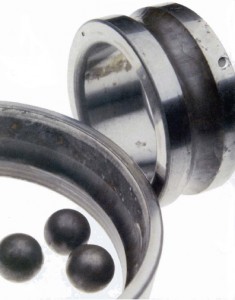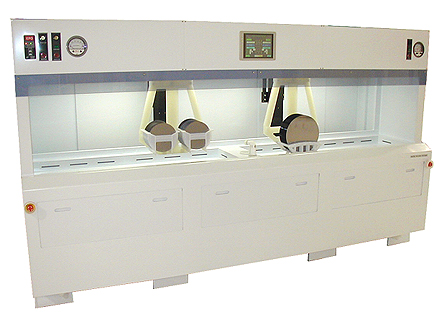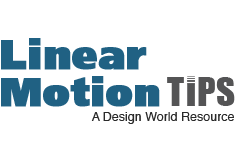Corrosive environments can include anything from detergents and chemicals for washdown (the high-pressure cleaning of equipment), to acid baths and their related vapors, to chemicals in food processing. Because profiled linear rails, round shafts, and ball screws are made primarily from steel components, they’re highly susceptible to corrosive agents, which can quickly cause rust, pitting, and degradation of the critical bearing surfaces. When this happens, you may seek vapor blasting services to clean up your machinery and remove the rust buildup.
There are measures that designers and engineers can take to protect components from corrosion. Probably the simplest solution is to consider bearings made from polymers. But polymer bearings can’t provide the same load capacity, rigidity, or running accuracy that their steel counterparts can. When the application calls for high load carrying capability, high stiffness, or high travel accuracy, steel components are the best technical solution. In these cases, there are three factors that designers and engineers can consider in order to protect components from corrosion and ensure optimal bearing life.

Image credit: The Barden Corporation
Orientation

Possibly the lowest-cost option that designers can employ to protect against bearing corrosion is to mount the components in a way that minimizes the corrosive agents from getting on the critical surfaces. For most linear bearing components or systems, this means mounting them upside down or on their side. Depending on the direction of the spray or splash, mounting the components above the work area can also minimize the amount of contact they receive with corrosive liquids. But if acids are the main concern, vapors may be as harmful as the actual liquid contamination. In this case, since vapors typically rise, mounting the components below the work area may be best.
For linear systems that are enclosed in a housing, it’s generally better not to employ a cover if the system is mounted upside down, so that any liquid that gets into the housing can drain out. When an enclosed system is mounted upright, the addition of drain holes in the housing can help prevent liquids from standing inside the actuator.

Image credit: Wafer Process Systems, Inc.
Materials
The first thing that probably comes to mind in terms of materials for corrosive environments is stainless steel. However, since stainless steels can’t be hardened, they have lower load carrying capabilities than bearing steel and may not be suitable for the application. Even if stainless steel is acceptable from a performance standpoint, the range of linear bearing products available in stainless or corrosion-resistant steel is limited. If stainless steel isn’t an option, there are a wide variety of platings and coatings for bearing steel (and for aluminum) that offer protection against virtually any corrosive agent.
Lubrication and sealing
The most common cause of bearing failure is a lack of lubrication, and while washdown processes (which are common in corrosive applications, especially in the food and beverage industry) rid the components of contamination, they can also wash away lubrication. When linear bearing components or systems are used in washdown applications, grease is the preferred lubrication, rather than oil, since grease is less likely to be washed away. For additional protection against bearing corrosion, full-contact seals will help keep the lubrication inside the bearing and keep corrosive liquids out.
Feature image credit: NTN Bearing Corporation


An informative and interesting blog is this, Thank you for sharing this, You shared a lot of information regarding this. Keep sharing such things.